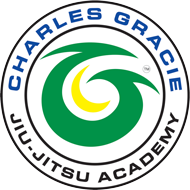FAQs
What is the history of Brazilian Jiu-Jitsu?
In the last days of the 19th century, some Jiu-Jitsu masters emigrated from Japan to other continents, teaching the martial arts, as well as competing in ad hoc arranged fights and competitions. Esai Maeda Koma, also known as “Conde Koma,” was one such master. After traveling with a troupe which fought in various countries in Europe and the Americas, Koma arrived in Brazil in 1915, and settled in Belem do Para the next year, where he met a man named Gastao Gracie. The father of eight children, among them five boys and three girls, Gastao became a Jiu-Jitsu enthusiast and brought his oldest son, Carlos, to learn to fight from the Japanese master. For a naturally frail fifteen-year old Carlos Gracie, Jiu-Jitsu became a method not simply for fighting, but for personal improvement. At nineteen, he moved to Rio de Janeiro with his family and began teaching and competing in the martial arts. In his travels, Carlos would teach classes, and also proved the efficiency of the art by beating adversaries in competitions he arranged literally by running advertisements in the local paper taunting area “tough guys” ,who were more physically strong, to fight him. In 1925, he returned to Rio and opened the first school, known as the “Academia Gracie de Jiu Jitsu.”
Since that time, Carlos started to share his knowledge to his brothers, adapting and refining the techniques to the naturally weaker physical characteristics of his family’s members. But what truly made Carlos different, and ultimately what makes Gracie Jiu-Jitsu different was this expansion of what Gracie Jiu-Jitsu included which went beyond the techniques of self defense and into a holistic health regimen. Carlos instinctively knew that a healthy fighter was superior to a fighter who had an unhealthy diet. Carlos taught them his philosophies of life as well as his concepts of natural nutrition. Eventually, Carlos became a pioneer in creating this special diet for athletes, “The Gracie Diet,” which transformed Jiu-Jitsu into a term synonymous with health.
Having created an efficient self-defense system, Carlos Gracie saw in the art a way to become a man who was more tolerant, respectful, and self-confident. With a goal of proving Jiu-Jitsu’s superiority as well as to build a family tradition, Carlos challenged the greatest fighters of his time, as well as managing the fighting careers of his brothers. Fighting opponents fifty or sixty pounds heavier, the Gracies quickly gained recognition and prestige.
Attracted to the new market which was opened around Jiu-Jitsu, many Japanese practitioners came to Rio, but none were able to establish schools as successful as the Gracies. This was due to the fact that the Japanese stylists were more focused on takedowns and throws, and the Jiu-Jitsu the Gracies practiced had many more sophisticated ground fighting and submission techniques. Carlos and his brothers changed the techniques in such a way that it completely altered the complexion of the international Jiu-Jitsu principles. These techniques were so distinctive to Carlos and his brothers that the sport became attached to a national identity, and is now commonly known as “Brazilian Jiu-Jitsu,” practiced by artists all over the world, including Japan.
Is it a good workout?
Two things can be said about joining any Charles Gracie Academy. The first is you will attain the highest form of physical conditioning all but a few dedicated athletes have attained. The second is that while you do, you will also learn how to defend yourself to a degree you never, ever, thought you could. More than one student has told Charles personally that they literally have exceeded all expectations they had upon entering. Gracie Jiu-Jitsu will make you the best that you can be.
Do I have to compete?
From the days of Carlos and Helio to today’s ADCC champion Roger Gracie, the Gracie family has always actively competed in Jiu-Jitsu tournaments and mixed martial arts events. While the rules of a Jiu-Jitsu tournament or even a mixed martial arts event do not take into account all the variables that exist in a street fight, we recognize that these tournaments allow students the opportunity to test their skill while minimizing the risk of injury. Those students who want to test their Jiu-Jitsu proficiency will definitely be encouraged to enter Brazilian Jiu-Jitsu and grappling tournaments if they also want to gain true higher levels of recognized proficiency in the art. Belt promotions in the Charles Gracie academy are not predicated on simple attendance. They occur when the student completes both the physical and well as the mental skills Gracie Jiu-Jitsu develops.
What makes the Charles Gracie Academy so special?
What makes Charles Gracie so special?
Can women learn?
Are there classes for children?
Is training safe?
What should I expect when I join?
What if I never trained a martial art before?
Is there a difference between Gracie Jiu-Jitsu and Brazilian Jiu-Jitsu?
As far as the techniques everyone is now familiar with, that are associated with Jiu-Jitsu, perhaps the answer is no. Brazilian Jiu-Jitsu has, simply stated, become another term implying Gracie Jiu-Jitsu, the martial art developed by the Gracie family.


Comments
No comment yet.